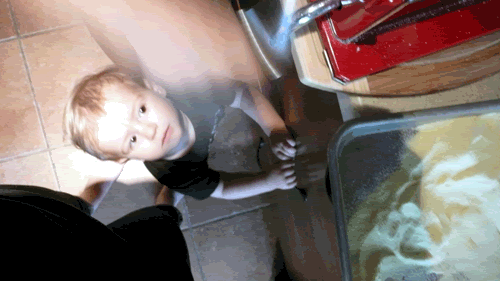
I wrote my first draft of the mushroom ravioli post a month ago and I just haven't been able to finish it because it's so insanely long. So instead of forcing myself to write a three-page entry about mushroom ravioli that will leave you too exhausted to attempt the recipe, I will break it into parts...and here is part one: the basic pasta recipe.
A confession: you can find a fresh pasta recipe anywhere, but most of the ones I've found are a little too basic. Forgive me if I'm going over familiar territory here. Another confession: making pasta that tastes good requires special equipment, unless you have limitless time and patience for rolling out pasta dough by hand. My husband thought I was crazy to buy the Imperia pasta machine, but I use it like once a week and I think it's just great. The one time I attempted to roll out pasta by hand it took forever and didn't turn out. The other piece of equipment I rely on for this is my KitchenAid mixer; I'm sure you could more easily forgo the mixer than the pasta roller.
4 large eggs
4 cups flour
Olive oil
Salt
4 cups of flour and 4 eggs will make A LOT of pasta: desirable for making ravioli or canneloni, too much if you're just cutting it up into noodles. All that matters is your ratio of one cup flour to one large egg.
Put the flour and eggs in the bowl of your mixer. Add a couple of tablespoons of olive oil and a generous pinch of salt. Mix with the paddle attachment over low speed (1 or 2) until a yellowish dough starts to form. If you're not using a mixer, just use your hands. The dough should be clumpy.
Cover the bowl and let the dough stand for about 15 minutes. This gives gluten time to form, which will give your pasta a nice smoothness. Knead the dough so it's one big nice ball. Divide it into golf-ball-sized balls to put through your pasta machine.
Before you start rolling out your pasta, here are some problems you might encounter and how to fix them. If the pasta is sticking to the machine or your hands, it's too wet so you should sprinkle a little semolina flour on and knead it a bit more. If it's dry and cracking, add a bit of olive oil and knead.
Generously dust a baking sheet with semolina flour. Now for the rolling (I'm assuming you're using the Imperia, if not, please consult the manual for your pasta machine). Put the machine on the widest setting and crank a ball of pasta through it. Fold the now-flattened piece into thirds and run it through again. You'll need to do this about ten times. Then start thinning it out by rolling it through each setting until you get to the thinnest one. Once I've rolled the pasta through the thinnest setting, I like to cut it in half with kitchen shears. Put your pasta on the baking sheet and repeat with the remaining balls of pasta. Make sure that each sheet of pasta has plenty of semolina on both sides before you put another layer of pasta on top of it-- you don't want them to stick!
Now you have fresh pasta. There are lots of variations-- you can add pureed spinach (you'll have to adjust the flour) for spinach pasta, or mix in herbs or spices. I made a saffron pasta once that I really enjoyed. Do whatever you want!

No comments:
Post a Comment